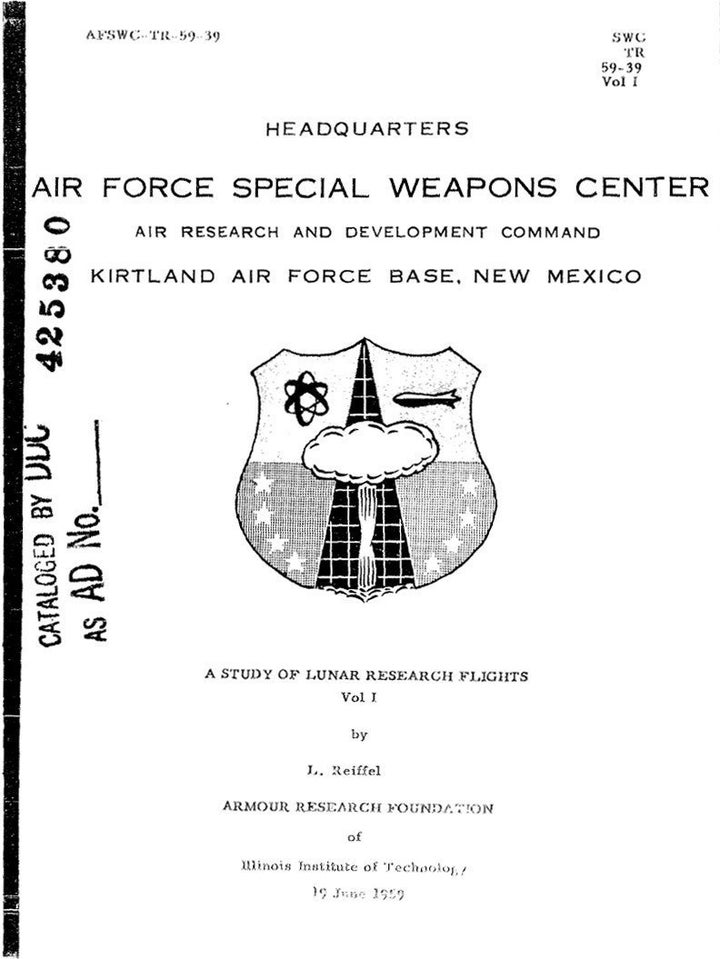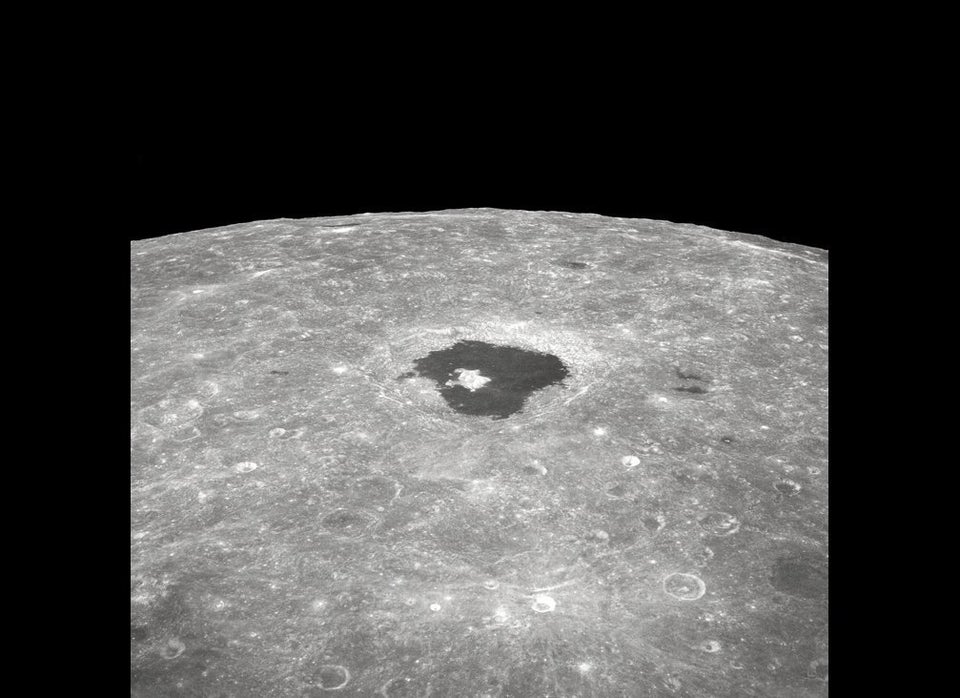
A story that surfaced over a decade ago is making the rounds again this week, as some media outlets are reporting that the U.S. considered detonating an atomic bomb on the moon in an effort to intimidate the Soviet Union at the height of the Cold War.
On Sunday, the Daily Mail revived the story, citing a 12-year-old interview with physicist Leonard Reiffel, formerly of the U.S. military-backed Armour Research Foundation and later a deputy director of NASA. Celebrated astronomer Carl Sagan also was said to have been involved with the secret project, which reportedly was known as "A Study of Lunar Research Flights" or "Project A119." Sagan died in 1996.
In the interview, Reiffel reportedly said the plan had been to launch a rocket that would deliver a small nuclear device to the moon's surface, where it would detonate.
Reiffel, now 85, is believed to be the only official to have publicly confirmed his association with the project. However, a 190-page document called "A Study of Lunar Research Flights, Volume I" is available online through the Information for the Defense Community database. The document, available in PDF format, is credited to Reiffel and bears the heading of Air Force Special Weapons Center and the Air Research and Development Command based at Kirkland Air Force Base in New Mexico.
The abstract reads:
Nuclear detonations in the vicinity of the moon are considered in this report along with scientific information which might be obtained from such explosions. The military aspect is aided by investigation of space environment, detection of nuclear device testing, and capability of weapons in space. A study was conducted of various theories of the moon's structure and origin, and a description of the probable nature of the lunar surface is given. The areas discussed in some detail are optical lunar studies, seismic observations, lunar surface and magnetic fields, plasma and magneti3 field effects, and organic matter on the moon.
Reiffel spoke to several publications about the project in 2000. His statements then coincided with a then-new Sagan biography, which suggested that the celebrity scientist might have breached security by revealing the classified project in an application for an academic fellowship, the Associated Press reported at the time.
Military officials abandoned the idea, Reiffel said, in part because of the danger it posed to people on Earth if the mission failed. Scientists also were concerned about contaminating the moon with radioactive material.
In an interview with The Observer, also in 2000, Reiffel said he did not know why the plans were scrapped but was glad that they were. "Thankfully, the thinking changed. I am horrified that such a gesture to sway public opinion was ever considered," he said.
In a new interview with The Huffington Post, Richard Rhodes, a Pulitzer-prize-winning author and an affiliate of the Center for International Security and Cooperation at Stanford University, said he was unfamiliar with Project A119. If there had been a plan to send a nuclear missile to the moon in the 1950s, he said, it would have been hard-pressed to advance past the study stage. The first Soviet craft crash-landed on the moon in 1959, followed three years later by the American craft Ranger 4, reports National Geographic.
"I doubt we had any rockets that would have had the power to leave earth's orbit and hit the moon," Rhodes said. "It takes a lot of power to take things out of earth's gravitational pull, much more than to just put something in orbit."
If there had been a secret plan, the show of U.S. technological prowess would have been meant as a counter to Sputnik, Rhodes added.
Though nuking the moon sounds far-fetched, Rhodes said some of the projects that grew out of Cold War tensions were far from funny.
"One of the craziest things we ever did was develop and deploy nuclear tipped anti-aircraft missiles, plane to plane. That's always seemed like insanity," he said. Once miniaturized nuclear weapons were created, "as all the services wanted their share--so they had to think of some use for these things, and their uses were marginally insane," at least by today's risk-reward standards, he said.
When asked about the project, the U.S. Air Force declined to comment, the Associated Press reported in 2000.
